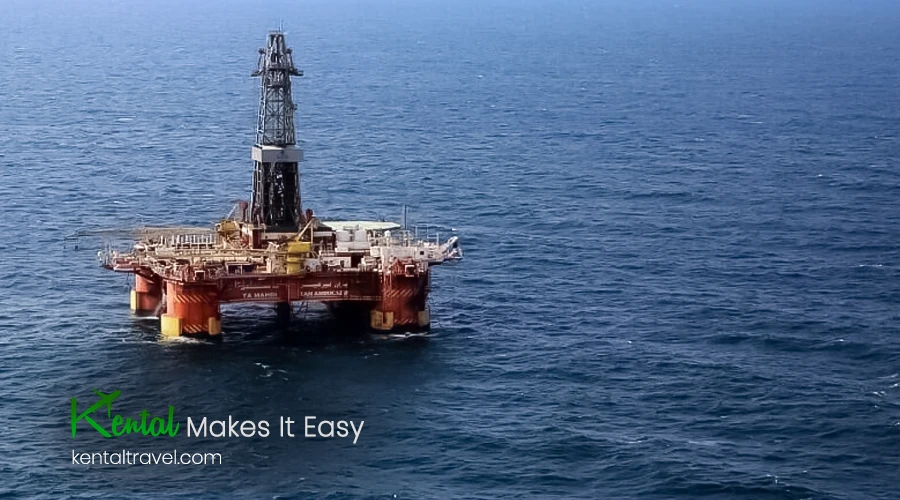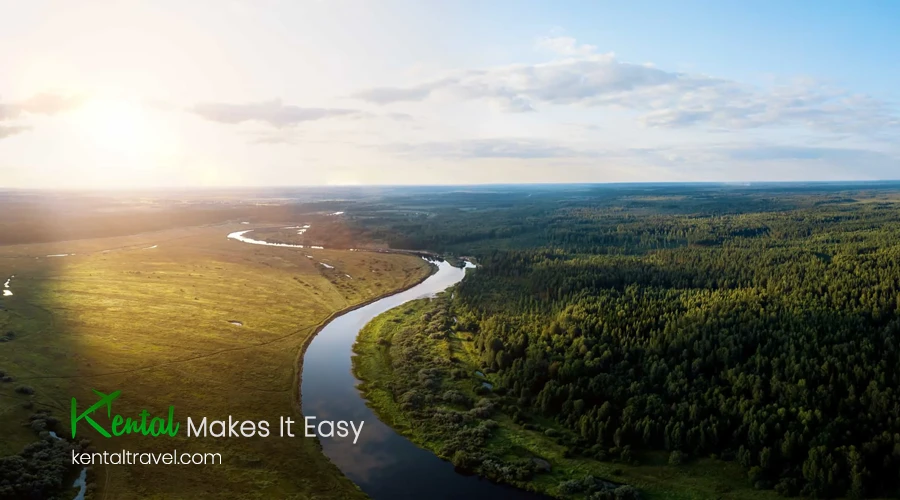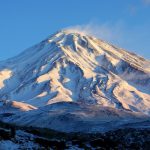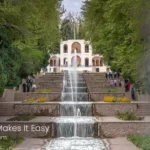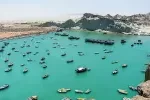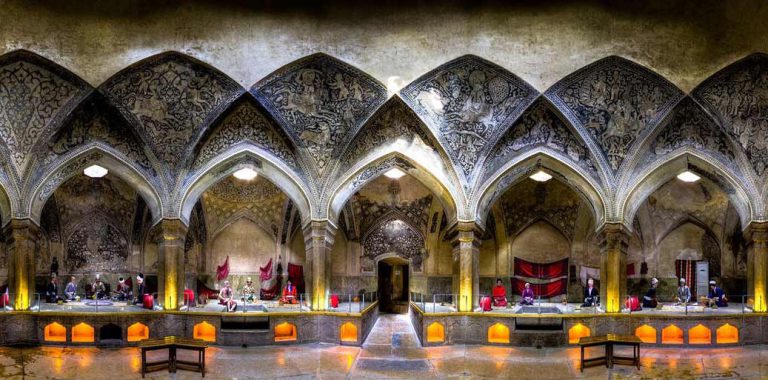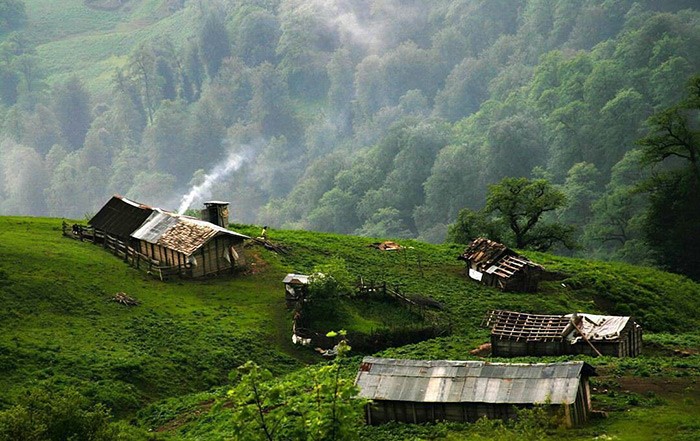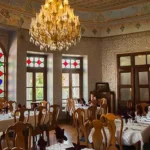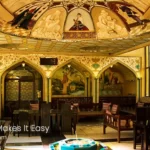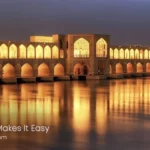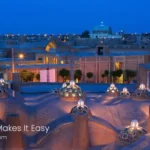The Caspian Sea is recognized as the world’s largest lake. Although it is technically not a sea because it doesn’t connect to open seas, it earned the name “sea” due to its vastness. The water of the Caspian Sea is salty, and it doesn’t qualify as a freshwater lake. Additionally, it boasts a rich ecosystem and is considered a prominent tourist attraction that draws in numerous visitors, as we’ll explore further.
All About the Caspian Sea
The name “Caspian” is derived from the Caspians, one of the oldest Iranian peoples residing in the northern regions of the Iranian Plateau. They lived in scattered areas ranging from Tehran to Mazandaran, Gilan, Azerbaijan, Armenia, and the Caucasus. The Caspians lived in Iran approximately three thousand years ago. They were of Iranian descent, and their language belonged to the Iranian language family. During the Median Empire, a part of the territory under their influence formed the Caspian people. Later, during the Achaemenid period, all the regions under their influence, like other areas in Iran, came under the rule of the Achaemenids.
Read more: Request Iran Visa
Location of the Caspian Sea
The Caspian Sea, as the largest enclosed water body within the confines of the Asian and European continents, is currently bordered by five coastal countries. It is located in the northern part of Iran and the southern part of Russia, spanning Turkmenistan, Kazakhstan, and Azerbaijan to the east. The Caspian Sea’s coastline stretches about 7,000 kilometers, and its surface area ranges from 371,000 to 386,000 square kilometers. With an approximate length of 1,200 kilometers and an average width of 320 kilometers, it covers an area of 438,000 square kilometers and holds a volume of 77,000 cubic kilometers. This makes it the largest relatively freshwater lake in the world.
Caspian Attractions in Iran
Here are some Caspian Attractions:
Caspian Sea Coast
The coastline boasts beautiful sandy beaches with clean, warm, and calm waters. These shores are a hotspot for summer tourists seeking sun, relaxation, and swimming. Tourist infrastructure developed in the countries surrounding the Caspian Sea, including Iran, has compiled a list of the most attractive tourist destinations along the shores of the world’s largest lake. The pristine coastline offers an excellent environment for unwinding, making it no wonder that the Caspian Sea shores are one of the most popular tourist destinations on the planet. Caspian Sea attractions include Caspian Port, a developing port located on the Caspian Sea’s coastal waters, featuring 25 wharf posts. The largest and most comprehensive passenger and terminal post collection in northern Iran is situated on the shores of Gilan’s cities like Rasht and Chaboksar, within the Anzali Free Trade-Industrial Zone area.
Fishery in the Caspian Sea
Fishing for sturgeon fish in the Caspian Sea begins in the autumn season. Fishermen spread vast nets in the shallow waters along the eastern coast of the Caspian Sea, and they usually spend their days fishing. They use a technique called “Pare,” where large nets, approximately 100 meters long and 7 to 10 meters high in a U-shape, are placed in the shallow waters near the coastline. Fishermen deploy these nets almost every morning, and by sunset, they collect their catch. This traditional method of fishing is one of the oldest practices on the northern shores of Iran and primarily relies on the physical strength of the fishermen. Common fish species in the Caspian Sea include sturgeon, whitefish, and carp, which are mostly bone-in fish.
The Caspian Caviar
Iranian caviar, specifically black caviar or “Marvarid Siah” in Persian, is not only famous in Iran but also enjoys a significant global reputation. Interestingly, other countries that actively export caviar introduce their product as Iranian caviar to enhance their sales. This exquisite caviar is extracted from unique species of fish found in the Caspian Sea. The rarity of this caviar, the exclusivity of the species, and its exceptionally high quality set it apart from other caviar types. The whole range of caviar produced in Iran, whether from wild or farmed sources, enjoys a distinguished status worldwide and is considered the finest. In general, caviar is a highly nutritious and valuable food. Still, Iranian caviar, particularly beluga caviar, is highly regarded for its superior quality and exceptional taste, making it an energy powerhouse for a healthy diet.
Caspian Sea Oil Industry
Caspian Sea Oil Reserves
The Caspian Sea is recognized as the world’s largest lake, covering nearly 40% of the total area of the world’s lakes in terms of oil and gas reserves. After the Persian Gulf and Siberia, it ranks as the third-largest global energy source. According to the World Energy Organization, the Caspian Sea holds confirmed reserves of over 100 billion barrels of crude oil and an estimated 12 trillion cubic meters of natural gas. These figures highlight the significant importance of the Caspian Sea for the countries bordering it, not only in geopolitical terms but also due to its vast oil and gas reserves.
Rivers of the Caspian Region
The northern part of the Caspian Sea is relatively shallow, with a depth of less than 5 meters. Approximately 130 rivers feed it. The largest among them is the Volga River, which annually contributes 241 cubic kilometers of water to the Caspian Sea.
These rivers play a crucial role in providing freshwater to the region’s inhabitants, both human and wildlife, despite the Caspian Sea itself being salty. The presence of these rivers, along with their rich historical and geographical significance, ensures that the Caspian region maintains a moderate and humid climate.
The Volga River, the largest river basin in the Caspian Sea, is the primary source of around 80% of the water entering the sea. The average flow of the Volga into the Caspian Sea is approximately 250 cubic kilometers per year. The Sefidrud River, with an average flow of about 4 cubic kilometers per year, is the largest river on the Iranian coast.
In total, 15 rivers and watercourses flow into the Caspian Sea, holding immense historical, political, and natural significance. Historically, these rivers have played a vital role in trade and relationships in the region. They not only preserve the unique identity of the Caspian Sea but also provide invaluable contributions to the ecosystems.
Cities Near the Caspian Sea
Mazandaran:
Mazandaran has long been a favorite travel destination, drawing thousands of tourists from all over Iran each year. The journey’s beauty begins with the scenic routes. The Firuzkuh Road, Chalous Road, and Haraz Road are some of the oldest and most captivating routes in Iran, winding through forests and lush landscapes.
Read more: Wonders in Iran
Ramsar:
If you’re enamored with sitting by the beach and watching the sun rise and set over the Caspian Sea’s waves, “Ramsar’s Silvery Beach” is the place to be. It offers a peaceful setting to appreciate the serene beauty of the Caspian Sea.
Noshahr
Noshahr, as one of the most famous coastal cities in Mazandaran, is no exception to this rule. One of Noshahr’s most beautiful beaches is Sisangan Beach that is one of the most beautiful beaches in Iran and also the famous Sisangan Forest Park.
Chalus
Few have not heard of the “Namak Abrud Beach,” famous and beautiful; it’s one of the beaches of Chalus, which is packed with visitors during the spring and summer seasons. Enjoying a trip to Namak Abrud is not just about watching the beach and the sea; it’s an unforgettable adventure.
Babolsar
Babolsar is a small coastal city in the heart of Mazandaran, surrounded by sea, mountains, and forests. This area is located north of Babol city. The proximity of Mazandaran cities allows you to cover multiple destinations in a single trip, offering a unique blend of sea, mountain, and forest landscapes.
These cities provide stunning coastal getaways, picturesque roads, serene beaches, and opportunities for thrilling adventures like jet skiing, boating, karting, and quad biking. Enjoy these destinations for their natural beauty and cultural significance.
FAQs about Caspian Sea
- Does Caspian Sea belong to Iran?
The Caspian Sea is not owned by any single country. It is the world’s largest enclosed body of water, bordered by five countries: Russia, Kazakhstan, Turkmenistan, Iran, and Azerbaijan. Each of these countries has a share of the Caspian Sea, and international agreements determine their respective boundaries and usage rights.
- Is Caspian Sea salt or freshwater?
The Caspian Sea is technically a saltwater lake. It has varying salinity levels, with the northern and central parts being saltier, while the southern part has lower salinity. It is not as salty as typical oceans but not as freshwater as rivers and lakes.
- What do Iranians call the Caspian Sea?
In Iran, the Caspian Sea is often referred to as the “Darya-ye Khazar” or simply the “Khazar Sea.”
- Do sharks live in the Caspian Sea?
No, sharks are not native to the Caspian Sea. The Caspian Sea’s ecosystem primarily consists of various species of fish, including sturgeon, as well as other marine life adapted to its unique conditions.


